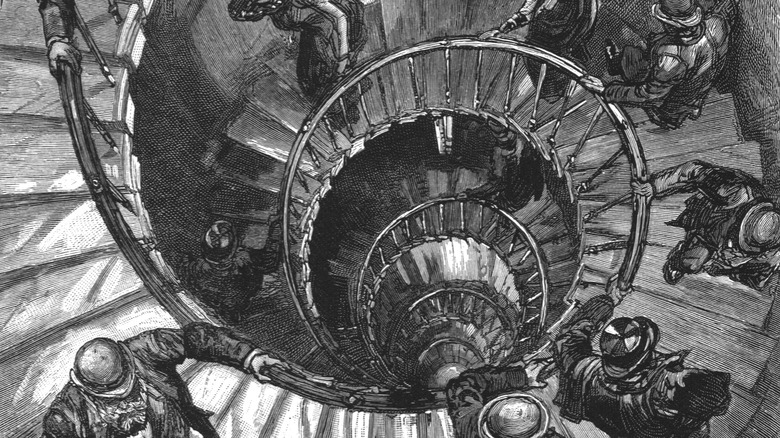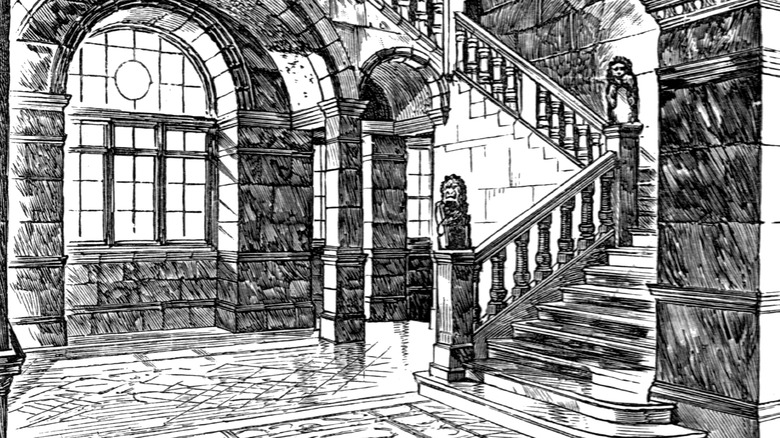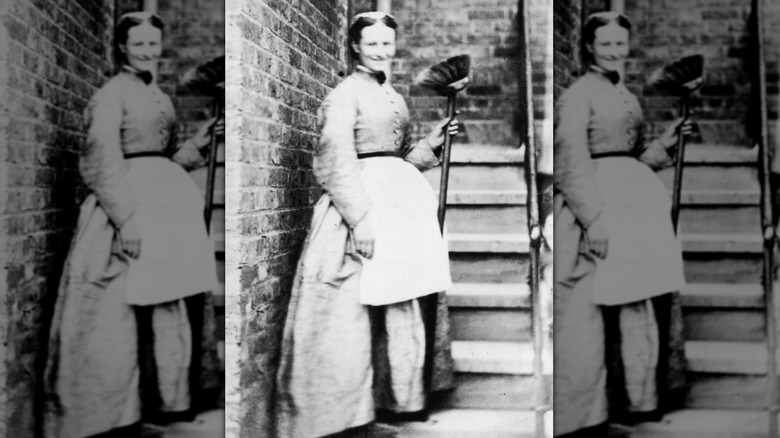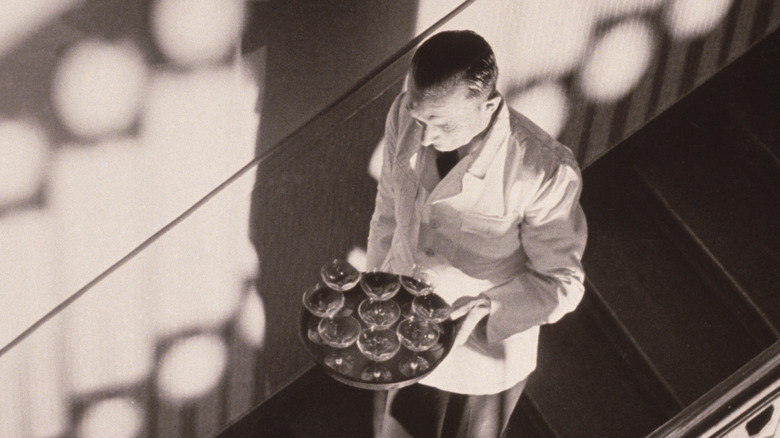Why Victorian Staircases Were So Dangerous
It can be easy for many people to be swept up in nostalgia for the Victorian era. It was the time of authors and poets ranging from Lewis Carroll to Bram Stoker, Kipling and Tennyson to operetta creators Gilbert and Sullivan. Some of the most beloved parts of Christmas were developed or popularized in those years. It was a transformative time, full of massive strides in science and politics. And the Victorian era produced some masterpieces of architecture, such as the current Palace of Westminster.
Of course, even the most besotted among us with Victoriana can't deny that there would be some drawbacks to living in that period: the imperial conflicts, the strict hierarchies, poor working conditions, and the state of health care pretty much anywhere on Earth. And with the massive upheavals going on throughout society, certain things were bound not to be fully vetted before entering public use, as detailed by the BBC. Take those beautiful Victorian buildings, for instance. Many were built quickly, and such basic details as the width and height of a staircase could end up neglected. And that turned some Victorian staircases into potential deathtraps.
Small measurement errors had big consequences
The quality of a staircase can vary in architecture from any period, depending on who did the building, what they had to work with, and how much they cared. In the Victorian period, according to the Lakeshore Museum Center, houses of a certain size and grandeur would have a prominently featured staircase, sometimes carpeted and richly decorated, at the front of the house, meant only for the family that lived there. Another staircase would be built in the back — the back stairs, second stairs, or servants' stairs, to give a few names. These staircases connected the living quarters of the servants with a major work area, like the kitchen.
Some family staircases from the Victorian period push up against modern safety recommendations on angle, length, width, and height, but not excessively so. The back stairs were another story. These were often built to be as steep and narrow as possible to minimize the space they took up. Cheap materials were used, and safety features like handrails and landings weren't included. Because they were such confined spaces, and because the servants of the day often walked the steps in constricting clothing while carrying heavy loads, the chances of a mishap (or worse) could be uncomfortably high.
Stairs depend on precise measurements
The Lakeshore Museum Center measured the servant staircase of the Hackley House, a historic Queen Anne Victorian-era home in Muskegon, Michigan, to gauge what kind of safety hazard it might represent. As a reference point for a "safe" stair, they relied on a formula developed by architect Peter Nicholson, who wrote an entire treatise on proper staircase construction (via Gate Expectations). Nicholson called for stairs to be between 30 and 35 degrees in angle and the going (the step itself) to be twice as long as the rise (or height) of the stair. The overall length of the staircase should not exceed 147 inches from the base to the top; any longer requires adding a landing.
The museum found that the servant stairs at the Hackley House confounded measurement due to their irregular size. The approximate angle of the stairs was 45 degrees, the going was 10 inches to the rise's seven, and the staircase was 17 feet long, 60 inches over the length before a landing was recommended. The museum also found that the servant stairs violated modern code by being less than 4 feet wide; the Hackley back stairs came to less than 3 feet.
If a few inches and degrees here and there doesn't seem like much, consider what the Museum's measurers had to do just to navigate the back stairs. On those 10-inch goings, they had to turn their feet completely sideways to have a solid footing.
Back stairs can be a modern draw for old buildings
If you were a servant who had to regularly walk up and down confined, irregular staircases with cumbersome clothes and handfuls, it may have been difficult to find any charm or appeal to that portion of the house. And it wasn't only private homes that could have such dodgy staircases; per The Independent, The Cock Tavern Theater of Kilburn was having trouble with its Victorian steps as recently as 2011, due to their not being up to code. Renovating a staircase in a building like that can be expensive, and if money isn't an issue, the space available inside Victorian buildings is.
But some homeowners and sellers have turned their old and questionable staircases into an asset. Some families who live in Victorian houses, like the Krall family of Bartlett, Illinois, regularly use the back stairs, leaving the main staircase attractive, unsullied, and reserved for special occasions (per The New York Times). Others use the old stairs — and their potential danger — to go viral. A woman named Kim shot a commentary-laden TikTok video of the back stairs of Bloomfield Farm (via Newsweek) and came away with millions of views. A follow-up video featured Kim's dog Molly, who Kim said was unable to manage the back stairs.



